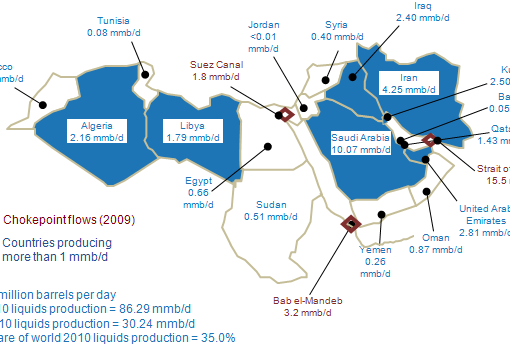EXECUTIVE SUMMARY
Digital Content technology is transforming traditional knowledge industry structures, business models, and ways of doing things and is forming an important activity in its own right. Creating digital content strategies of increasing importance to national governments. Particularly in cases where cultural and linguistic heritage is highly valued, these programs demonstrate the commitment of the public sector to providing the type of digital content desired by the citizenry. Mechanisms for the production, distribution and marketing of various kinds of digital content are necessary in these plans.
Since 2003, ESCWA has recognized that the digital content industry is one of the main pillars for the knowledge-based economy and could provide many opportunities for investing in ICT in the Arab region. Whereas many challenges face the Arabic-speaking countries in developing this industry, the chances of success are considered enormous and attractive.
Content, in its multitudes of forms, production and delivery constitutes the backbone of knowledge
economies and provides the landscape for two distinct, yet overlapping, industries: the Media content
industries (MCI) and the creative industries. According to the Connect Arab Summit 2012, “digital content has many forms (text, image, video, animation, audio, maps, or e-applications) and is in use for many functions (communication, news, networking, recruitment, entertainment, e-commerce, topic search, location based services, education, training, etc.). There are many tools and technologies to create and disseminate content. Online Digital content is the main driver for development of the Internet Ecosystem. Digital content is also penetrating broadcasting (TVs & Radio), Books, Music, Cinema, as we are becoming more and more a digital world.
Digital content should be looked upon within the context of the environment and mechanisms to create, store, communicate and present it. This is not limited to the technological, but also the legal, and cultural dimensions. This holistic view is essential to deal with the right issues for its development”. The digital content industry and related services have experienced significant growth in recent years, much more than many other business sectors. Several different business models have emerged; some are based on subscriptions; others are based on advertisements; some are contractual to consumers and businesses. It is believed that the development and flourishing of a digital content market depends on broadband connectivity and its affordability, in addition to the creation of quality and popular content.
Globally, the content industry is economically concentrated. The concentration comes as a result of few economic preferences, such as: access to very large venture capital and stock markets, or privileged access to large markets. Therefore, major players set the pace and the rules of the market, as well as the business models, on global and country levels. Many of the emerging businesses need to adapt and compete in this environment. Often, their best fate, if they are successful, would be to be bought off, with a largely overvalued offer, by one of the major players.
The social and political transformation which has been taking place in the Arab region has created a quantum leap in production and access of Arabic content through social networks and other media applications, such as personal reporting and uploading of text and videos. So it was not surprising to find the Arabic language has jumped to seventh position in the list of top 10 languages of internet users by language for 2011.
The global content market for 2011 was estimated by a Price Waterhouse Coopers to be just below
$3000 B and is predicted to increase to $3800 B in 2015. The ESCWA/ Arab region’s portion of the content market is estimated to be $88.8 B and $112.2 B for 2011 and 2015 respectively. And, if the assumptions 8 made in thisstudy are plausible, then the expected portion of DAC, out of total content for the region, is $18 B in 2011 and $26 B in 2015.
Although the region is following global trends in content growth, one can easily spot gaps in segments of digital content such as e-Books and e-Learning. These segments have not developed as quickly as expected. Furthermore, centuries of heritage in the form of books and documents in Arabic provide excellent opportunities for digitization.
Digital advertising is also identified as a key issue for the growth of DAC in the region. According to Arab Content 2012, only 2% of total advertising is in digital form. This means that one of the major sources of revenues for typical business models is very weak in the region. The end user/consumer segment of content is also expected to grow due to the growth of interest in social networks for political and social reasons. This trend has enhanced in the region in the last two years. It is evident that the potential for a digital content industry in the region is high. A gap between what can be done and what is available should provide incentives to governments and the private sector to promote growth and development of digital content industries and services in the region. The Arabic language is an effective platform for the region which justifies collaboration and an open regional market approach to its development.
The study consists of four sections and a preview, in which, an account of ESCWA contributions to the subject of digital Arabic content since 2003 is summarized. Section I deals with definition of the two major sectors which provide the feed for digitization: the media content and the creative sectors, with large portions of both sectors being digitized, or are available for digitization in the future. Section I also provides an overview of the global status of digital content. Section II addresses the economic aspects of the DAC market. It provides an overview of the regional status of DAC, its structure and segmentation, estimation of the content market and other related topics. Section III deals with issues related to the industry’s enabling environment, such as investments, government roles and policy, education and training, and partnership and collaboration. Section IV summarises a number of conclusions and proposes a list of recommendations which were found important to bring to the attention of the reader. Important amongst them are the following:
− Development of policies and strategies for DAC development;
− Improve the penetration and affordability of broadband;
− The establishment of national/ regional foundations for the DAC industry;
− Support and fund research and development in computational linguistics;
− Invest in a regional partnership to develop automated tools for optical character recognition (OCR) for Arabic that should provide users with reliable, robust and fast tools for applications;
− Establishment of content industries for e-Books and e-Learning in the Arabic language;
− Encourage local/regional universities to partner with the industry;
− Launch awareness campaigns through media, directed at schools and the young, on the beauty and wealth of the Arabic language, its heritage and culture, and the importance of preserving it through
− the process of digitization;
− Governments’ establishment of funds and encouragement of the banking sector in introducing venture capital support for start-ups and the creation of SME in DAC industry sector.
ACKNOWLEDGMENT
This report “Status of Digital Arabic Content industry in the Arab Region” was prepared by two
prominent experts in Knowledge Society policies and strategies,Mr. Abdulilah Dewachi, senior expert in
ICT, and Mr. Samir Aita, senior expert in Economy and ICT.
From the ICT Division at ESCWA, Ms. Nibal Idlebi, Chief of the ICT Applications Section, reviewed
this report and input related to country case studies was elaborated by Ms. Hania Dimassi, ICT Research
Assistant.
To continue reading please download the whole document as PDF file








Comment here